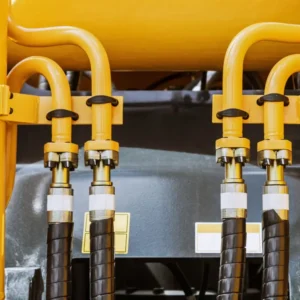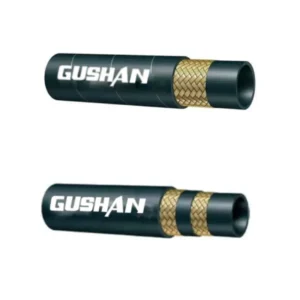Hydraulic hose couplings, often referred to as hydraulic fittings or hydraulic connectors, are critical components in hydraulic systems. They are responsible for securely connecting hydraulic hoses to various components, such as pumps, valves, and cylinders.
These hydraulic hose couplings play a vital role in ensuring the efficient and reliable operation of hydraulic systems across diverse industries, including construction, agriculture, manufacturing, and automotive.
This comprehensive guide delves into the world of hydraulic hose couplings, covering their types, materials, applications, and crucial considerations for selection and installation. By understanding the intricacies of these components, you can significantly enhance the performance, safety, and longevity of your hydraulic systems.
What Is Hydraulic Hose Coupling
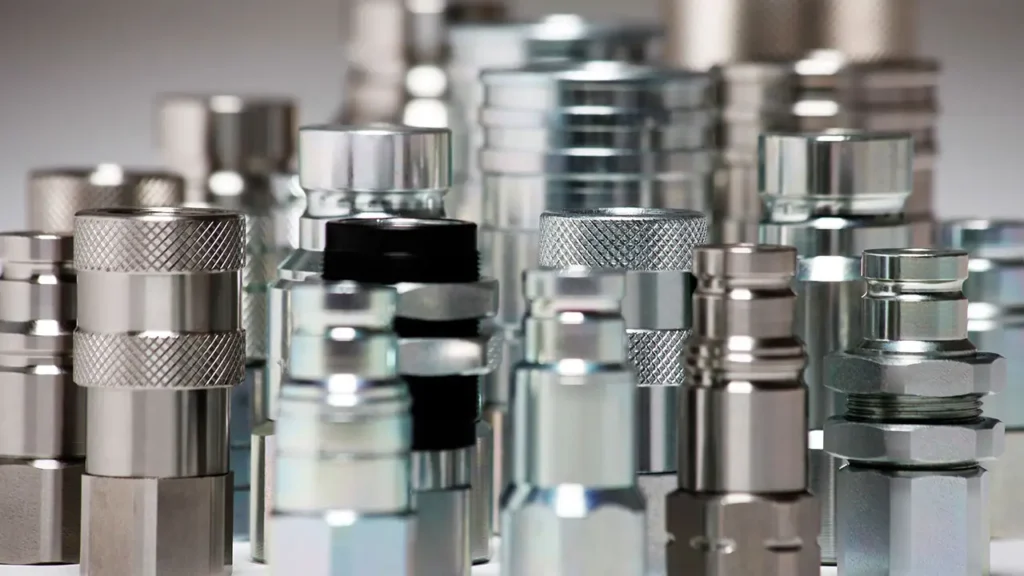
A hydraulic hose coupling is a connector used to join two sections of hydraulic hose together or to connect a hose to a hydraulic component, such as a pump or valve. These couplings are essential in hydraulic systems as they ensure a leak-proof and secure connection, allowing for the efficient flow of hydraulic fluid.
Key Components of a Hydraulic Hose Coupling:
- Hose Nipple: A metal fitting that is inserted into the end of the hydraulic hose.
- Ferrule: A metal ring that is crimped onto the hose nipple to secure it in place.
- Coupling Body: The main part of the coupling that connects to the hose nipple and provides the connection point for another hose or component.
Hydraulic Hose Coupling Types
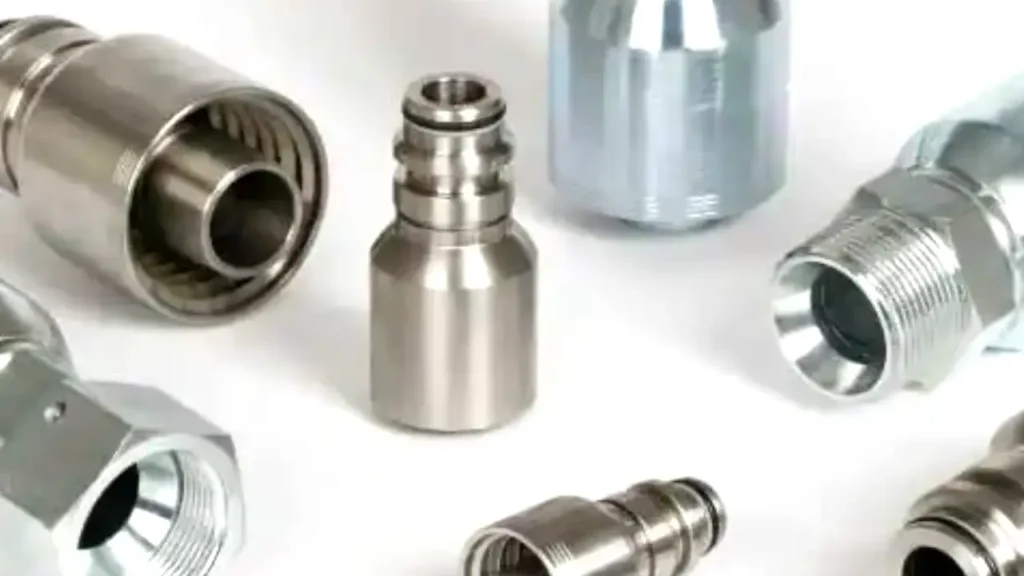
Here are some widely used hydraulic hose couplers for your selection.
JIC (Joint Industry Council) Couplings
- Widely used and versatile
- Rely on a tapered thread design for sealing
- Common in construction, agriculture, and industrial machinery
SAE (Society of Automotive Engineers) Couplings
- Primarily used in mobile equipment and automotive applications
- Feature: 45-degree flare or 24-degree flareless design for sealing
- Common in hydraulic systems of vehicles, heavy machinery, and mobile hydraulic power units
Metric Couplings
- Use metric threads for connection
- Available in various standards (DIN, ISO, BSPT)
- Common in European and international equipment
Quick-Disconnect Couplings
- Allow for rapid connection and disconnection
- Come in various designs (flat-face, ball-lock, bayonet-style)
- Common in applications requiring frequent connection and disconnection
O-Ring Face Seal (ORFS) Couplings
- Use an O-ring for reliable sealing
- Suitable for high-pressure applications
- Common in hydraulic systems requiring high-pressure and leak-free connections
Tapered Thread Couplings
- Rely on a tapered thread design for sealing
- Used in lower-pressure applications
- Common in older hydraulic systems and low-pressure applications
Flareless Couplings
- Use a compression fitting for sealing
- More resistant to vibration than flared couplings
- Common in applications where vibration is a concern
How to Choose the Right Hydraulic Hose Coupler
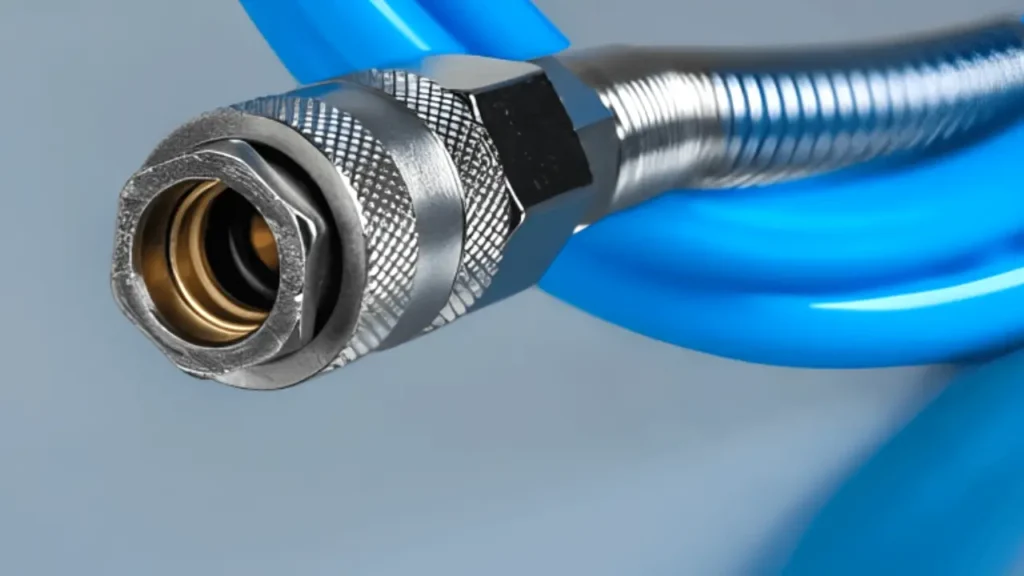
Here are the key factors to consider when selecting a hydraulic hose coupler in the following:
Pressure Rating
The pressure rating of a hydraulic hose coupler is a critical factor to consider. It’s essential to ensure that the coupler’s pressure rating exceeds the maximum operating pressure of your hydraulic system. Underestimating this can lead to catastrophic failures, such as hose bursts or component damage.
When selecting a coupler, always refer to the manufacturer‘s specifications to determine its pressure rating. Keep in mind that pressure ratings can vary based on factors like temperature, fluid type, and vibration levels.
Flow Rate
The flow rate of a hydraulic system refers to the volume of fluid that passes through the system per unit of time. It’s essential to choose a coupler that can handle the required flow rate without causing excessive pressure drops or restricting fluid flow.
A coupler with an insufficient flow capacity can lead to reduced system performance, increased energy consumption, and potential component damage. Therefore, it’s crucial to consider the required flow rate of your application and select a coupler that can meet or exceed this demand.
Hydraulic Hose Size and Type
The size and type of hydraulic hose used in a hydraulic system are important factors to consider when selecting a coupler. The coupler must be compatible with the inner diameter of the hose to ensure a tight fit and prevent leaks. Additionally, the materials of the hose and coupler should be compatible to avoid any adverse reactions or degradation.
Different types of hoses, such as rubber, thermoplastic, and wire braid, have specific requirements for couplers. It’s important to choose a coupler that is designed to work with the specific type of hose being used.
Temperature Range
Hydraulic systems often operate in various temperature environments, from freezing cold to extreme heat. It’s essential to select a coupler that can withstand these temperature fluctuations without compromising its performance or integrity.
Exposure to extreme temperatures can cause materials to expand or contract, potentially leading to leaks or damage. Therefore, it’s crucial to choose a coupler made from materials that are resistant to temperature extremes and can maintain their mechanical properties.
Fluid Compatibility
The compatibility of the hydraulic fluid with the materials of the coupler is a critical factor to consider. Certain fluids can cause corrosion or degradation of specific materials, leading to premature failure of the coupler.
It’s important to select a coupler made from materials that are resistant to the specific hydraulic fluid being used. Additionally, the seals and gaskets within the coupler should also be compatible with the fluid to prevent leaks and ensure optimal performance.
Vibration and Shock
Hydraulic systems often operate in environments with significant vibration and shock, such as construction equipment and heavy machinery. These forces can put stress on the coupler and its components, potentially leading to fatigue failures or leaks.
It’s essential to choose a coupler that is designed to withstand vibration and shock. This includes factors like the material strength, the design of the sealing mechanism, and the overall robustness of the coupler’s construction.
Connection Type
The type of connection used to attach the coupler to the hose is another important factor to consider. Common connection types include threaded connections, compression fittings, and quick-connect fittings.
Threaded connections offer a reliable and durable connection but can be time-consuming to assemble and disassemble. Compression fittings provide a quick and easy connection but may not be suitable for high-pressure applications. Quick-connect fittings allow for rapid connection and disconnection of hoses but may not be as durable as threaded connections.
Material Compatibility
The material compatibility of the coupler is crucial to ensure its long-term performance and reliability. The material should be resistant to corrosion, fatigue, and other factors that can degrade its properties.
Common materials used for hydraulic hose couplers include steel, stainless steel, brass, and various types of plastics. The choice of material will depend on the specific application and the environmental conditions the coupler will be exposed to.
Seal Type
The seal type used in a hydraulic hose coupler is critical to prevent leaks and ensure the integrity of the hydraulic system. Common seal types include O-ring seals, metal-to-metal seals, and lip seals.
O-ring seals are a common and effective choice for many applications. They provide a reliable seal and are relatively inexpensive. Metal-to-metal seals offer excellent sealing performance, especially at high pressures, but they can be more expensive and difficult to install. Lip seals are often used in dynamic applications, such as rotary joints, to prevent leakage between rotating components.
Manufacturer’s Recommendations
Always consult the manufacturer‘s recommendations for specific guidelines and limitations. Manufacturers often provide detailed information on the proper selection, installation, and maintenance of their products.
By carefully considering these factors, you can select the right hydraulic hose coupler to ensure the reliability and safety of your hydraulic system.
Conclusion
In conclusion, understanding the intricacies of hydraulic hose couplers is paramount to ensuring optimal performance and safety in hydraulic systems. By carefully selecting the right type of coupler and adhering to proper installation and maintenance practices, you can significantly enhance the efficiency and longevity of your hydraulic equipment.
Ready to elevate your hydraulic systems?
Explore our extensive range of high-quality wholesale hydraulic hoses, designed to meet the demands of diverse industries. From construction and agriculture to manufacturing and mining, our hoses offer exceptional durability, flexibility, and resistance to extreme pressures and temperatures.
Contact us today to discuss your specific needs and discover how our hydraulic hoses can empower your operations.

